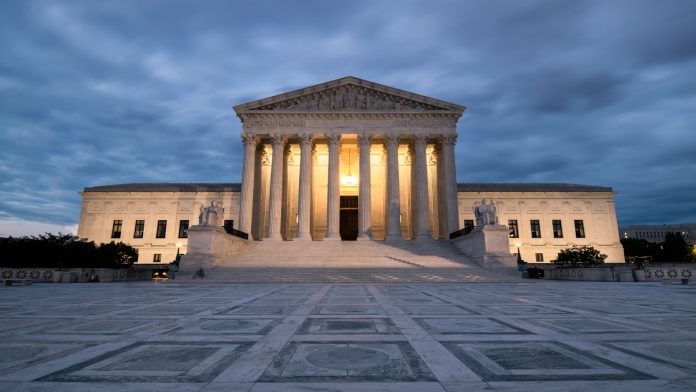Today marks the final day of the Supreme Court’s term. Justices are expected to issue their remaining opinions Friday, June 27, during a public, non-argument session.
Six high-profile cases are still pending, with significant implications for voting rights, public health, education, online safety and presidential power.
According to Ballotpedia, the Supreme Court issued 61 opinions during its 2024-2025 session.

Gerrymandering and voting rights
In Louisiana v. Callais, the court will decide whether the state’s 2024 congressional map unconstitutionally prioritized race. The new map created two majority-Black districts after a previous map was ruled likely to violate the Voting Rights Act.
Plaintiffs argue the redistricting was a racial gerrymander, while the state says it aimed to protect Republican incumbents, including House Speaker Mike Johnson.
Birthright citizenship
In Trump v. CASA Inc., justices will review the legality of nationwide injunctions that have blocked President Donald Trump’s executive order, seeking to restrict automatic U.S. citizenship for children born to immigrants without legal status and foreign visitors.
The ruling could reshape how broadly lower federal courts can block federal policies, affecting both future administrations and major policy battles.
Age-verification for online pornography
In Free Speech Coalition v. Paxton, the justices will weigh a Texas law that requires pornography websites to verify users are over 18. Industry groups say the law violates free speech rights, while Texas argues it’s needed to protect minors.
Lower courts upheld the law under a lower constitutional standard known as rational basis review. Challengers argue the court should apply strict scrutiny, which is typically used in First Amendment cases.
LGBTQ+ content in public schools
In Mahmoud v. Taylor, religious parents in Maryland seek the right to exempt their children from lessons that include LGBTQ+ storybooks, citing First Amendment protections.
During arguments in April, justices signaled potential support for broader parental rights in public education.
Preventive care and the Affordable Care Act
In Kennedy v. Braidwood Management Inc., the court will determine whether U.S. Preventive Services Task Force members, who help set mandatory coverage under the Affordable Care Act, were properly appointed.
The plaintiffs argue the task force lacks constitutional legitimacy, particularly in mandating HIV prevention drug coverage that they oppose on religious grounds.
FCC broadband subsidies
In Federal Communications Commission v. Consumers’ Research, the Supreme Court will review whether Congress gave the FCC too much power to manage a federal fund that supports broadband and phone service in rural and low-income areas.
Challengers say the FCC’s authority and its use of a private company to help run the program violate constitutional limits on how much power Congress can delegate to agencies.
The FCC argues the system is legal and essential for expanding access nationwide.
Which cases have already been decided?
In Catholic Charities Bureau v. Wisconsin Labor & Industry Review Commission, the Supreme Court ruled that Wisconsin wrongly denied a tax exemption to a Catholic nonprofit that provides social services. The state argued that the group’s work was too secular to qualify, but the justices found that distinction discriminatory. The decision could broaden tax exemption rights for religiously affiliated organizations.
In Seven County Infrastructure Coalition v. Eagle County, Colorado, the Supreme Court narrowed the scope of federal environmental reviews for major projects like rail lines and pipelines. The justices ruled unanimously that agencies only need to evaluate direct impacts, not broader effects like climate change. The case involved a proposed crude oil rail line in Utah.
In Bondi v. VanDerStok, the Supreme Court upheld a Biden administration rule requiring background checks and serial numbers for “ghost gun” kits — unassembled firearm parts that can be easily converted into working weapons. The 7–2 decision reverses a lower court ruling and finds that the 2022 rule, issued by the Bureau of Alcohol, Tobacco, Firearms and Explosives, aligns with the Gun Control Act of 1968. The Court found the rule consistent with the text of the law.

